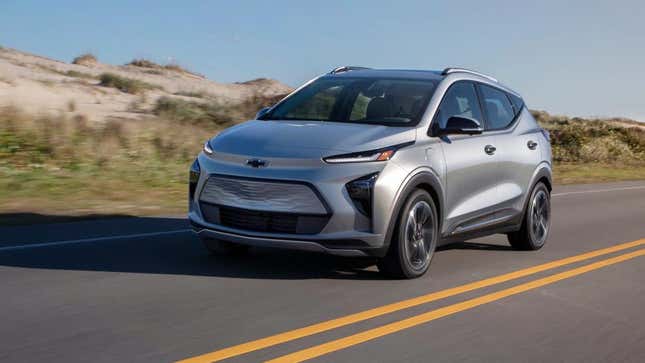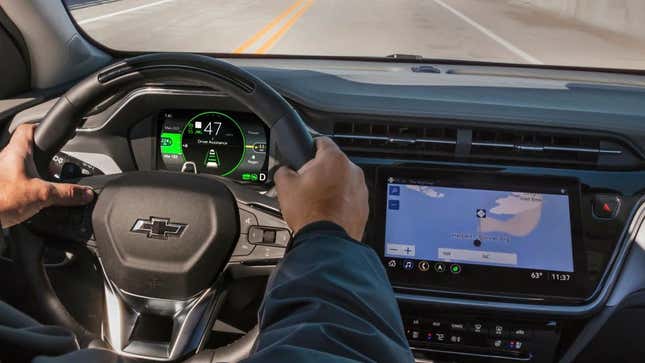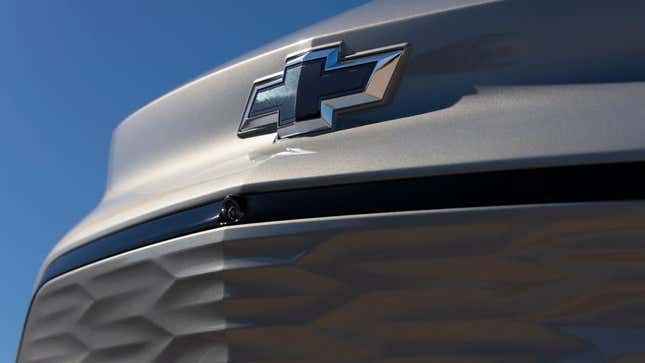
The new Chevrolet Bolt EUV and Bolt EV are two of the coolest new cars from the big American carmakers, and they are a good introduction to GM’s EV future. But these models will miss out on an integral part of GM’s Super Cruise.
The Super Cruise in the Bolt EUV is not as super as Chevy claims. The EUV will lack the Automatic Lane Change capability that upscale GM models come with, GM Authority reports. I think it raises questions about the claims in this video:
Of course, we can almost rely on carmakers being a little optimistic or overselling their features, but if GM wants its new EVs to stand a chance it needs to step off on the right foot. This is not the way to do it. Not if it wants to compete with systems already on the market, such as those from Tesla.
The Bolt EUV will lack this feature because it’s built on the Bolt EV, which is based on GM’s older Global A architecture, as GM Authority notes. The distinction is that Automated Lane Change requires new Global B tech, while the Bolt and Bolt EUV are Global A as GM itself explains to GM Authority:
At the media reveal of the vehicle, Super Cruise Assistant Program Engineering Manager, Jeff Dinakar, explained why Automated Lane Change would not be available on the Bolt EUV: “This requires VIP.”
In this case, VIP stands for Vehicle Intelligent Platform, also known as the GM Global B electronic architecture. Essentially a vehicle’s electronic nervous system, Global B has gradually been replacing the earlier Global A in GM models, which dates back to the 1990s, and in some cases, even before.
Although the Bolt EUV will go on sale this summer as a brand new model, it is technologically and mechanically similar to Chevrolet‘s other all-electric crossover, the Bolt EV, which is undergoing a refresh for the 2022 model year (but will not offer Super Cruise, even as an option). The electronic architecture for both is basically Global A, but with a partial update which evolves it in the direction of Global B without actually turning it into a “proper” Global B vehicle. As such, the electrical system is not sufficient to allow the Bolt EUV to be fitted with Automated Lane Change.
Keep in mind, this refers to the 2022 Bolt EUV. The Bolt EV misses out on Super Cruise entirely. So, even if the styling of the new Bolts is a big leap ahead, the systems underneath are derived from older tech that will soon be at a disadvantage as driver assistance features mature.
The Chevy Bolt rides on its own dedicated platform, but was designed quickly off of existing Gamma platform architecture, as Green Car Reports explained back in 2016. This is a new car, but its roots go way back. We noted that the Volt is designed just like a gas-engine car but with the engine yanked out in favor of batteries and electric motors when we followed a comprehensive tear-down of the Bolt, BMW i3, and Tesla Model 3 at Munro:
That GM says the Bolt EUV lacks “VIP” is cute. Look, I love wordplay and can appreciate GM being a little tongue-in-cheek about this, but the statement could be misconstrued as a way of telling drivers that even if they are among the first to take up GM’s electrified bet, they’re not really very important and neither is their car.

